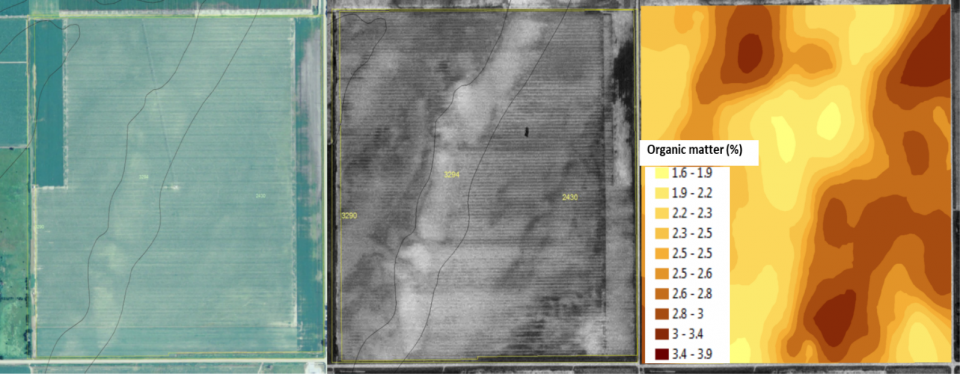
Soil Sampling for Better Fertilization Decisions

Soil sampling and testing are essential to determine soil properties and fertility levels to make good management decisions about fertilizer, manure, and lime application rates. Appropriate nutrient and amendment applications can increase crop yield, reduce input cost, and minimize environmental impact. Soil testing becomes inexpensive when compared to the total investment in crops and fertilizers.
Soils are typically sampled in the fall or spring. Either time works to determine potassium, phosphorous, sulfur, micronutrient and lime requirements. However, if trends in nutrient concentrations are being compared over time, it is important to sample at similar times of the year. For nitrogen (N) recommendations, it’s recommended that both soil organic matter and residual soil nitrate-N be measured.
The timing of soil sampling for making N recommendations could be important as snowmelt and precipitation during early spring may affect N losses (especially for coarse-textured soils), resulting in under application of pre-plant or in-season N. Collecting pre-plant soil nitrate-N soil samples to a two- or three-foot depth is a good practice for determining residual soil nitrate-N to be credited in N rate decisions.
A critical step for successful soil sampling is to collect representative samples from the field. The University of Nebraska provides detailed information about different approaches for soil sampling for uniform and variable-rate fertilizer application. (See Guidelines for Soil Sampling, NebGuide 1740.) The sampling pattern should be selected based on the nutrient management decision needing to be made and to best represent the field. For uniform fertilizer applications, samples can be collected randomly within representative areas of the field. However, accounting for known sources of variability in soil fertility such as soil types, cropping history and erosion, etc. is still helpful in adjusting recommendations even if the fertilizer is uniformly applied.
Consider grid sampling of one to 2.5 acres if soil type or previous management (differences in livestock containment, manure application, irrigation amounts or cropping history) causes variation in nutrient availabilities. Consider zone or directed sampling if yield maps, remotely sensed images or other sources of spatial information are available and show consistency from one layer to another layer. Both grid and directed soil sampling are valid options for precision soil sampling. Grid sampling for nitrate-N is not recommended because annual fluctuations in nitrate levels would require annual grid sampling, which is not cost-effective. Instead, residual nitrate sampling (to a depth of three feet) should be done on a directed sampling basis. More information can be found in the Nebraska Extension publication, Soil Sampling for Precision Agriculture.
Sampling depth is another key factor for good soil sampling. It is important to represent the root zone where the plant will uptake nutrients, but it must be consistent with the sampling depth used in developing the calibration data set to be used for interpreting the soil tests. In dry years, when it is difficult to push the probe into the ground, there is a danger of not getting the proper depth. Sampling too shallow will often lead to unusually high soil test results because of the tendency for nutrients to become concentrated near the surface. Shallow sampling will thus overestimate the actual soil nutrient status and lead to underestimating fertilizer rates needed.
Soil samples for determining soil pH, soil organic matter, and availability of any nutrient other than N should be taken from the 0-8 inch soil depth. A single sample should be comprised of thoroughly mixed soil from 12 or more places in the sampling zone. Sampling zones should be 40 acres or less.
Guidelines for interpreting soil test results for nutrient application decisions are available in crop-specific UNL Extension publications and in the Extension book, Nutrient Management for Agronomic Crops of Nebraska.
Online Master of Science in Agronomy
With a focus on industry applications and research, the online program is designed with maximum flexibility for today's working professionals.
